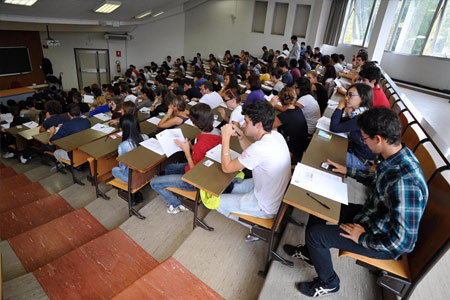- Authors:
-
Brambilla, P; Bedogni, G; Moreno, La; Goran, Mi; Gutin, B; Fox, Kr; Peters, Dm; Barbeau, P; De Simone, M; Pietrobelli, Angelo
- Title:
-
Crossvalidation of anthropometry against magnetic resonance imaging for the assessment of visceral and subcutaneous adipose tissue in children.
- Year:
-
2006
- Type of item:
-
Articolo in Rivista
- Tipologia ANVUR:
- Articolo su rivista
- Language:
-
Inglese
- Format:
-
A Stampa
- Referee:
-
Sì
- Name of journal:
- International Journal of Obesity
- ISSN of journal:
- 0307-0565
- N° Volume:
-
30
- Number or Folder:
-
1
- Page numbers:
-
23-30
- Keyword:
-
visceral adipose tissue; measurements; MRI; pediatric; body composition; prevention
- Short description of contents:
- BACKGROUND: The study of the relationship between anthropometry and visceral adipose tissue (VAT) is of great interest because VAT is associated with many risk factors for noncommunicable diseases and anthropometry is easy to perform in clinical practice. The studies hitherto available for children have, however, been performed on small sample sizes.DESIGN: Pooling of the data of studies published from 1992 to 2004 as indexed on Medline.AIMS: To assess the relationship between anthropometry and VAT and subcutaneous adipose tissue (SAT) as measured by magnetic resonance imaging (MRI) in children and to analyze the effect of age, gender, pubertal status and ethnicity.SUBJECTS AND METHODS: Eligible subjects were 7-16 year-old, with availability of VAT and SAT, gender, ethnicity, body mass index (BMI) and waist circumference (WC). A total of 497 subjects were collected from seven different investigators and 407 of them (178 Caucasians and 229 Hispanics) were analyzed.RESULTS: Despite ethnic differences in MRI data, BMI, WC and age, no difference in VAT was found between Caucasians and Hispanics after correction for SAT and BMI. Univariate regression analysis identified WC as the best single predictor of VAT (64.8% of variance) and BMI of SAT (88.9% of variance). The contribution of ethnicity and gender to the unexplained variance of the VAT-WC relationship was low (< or =3%) but significant (P < or =0.002). The different laboratories explained a low (< or =4.8%) but significant (P < 0.0001) portion of the unexplained variance of the VAT-WC and SAT-BMI relationships. Prediction equations for VAT (VAT (cm(2)) = 1.1 x WC (cm)-52.9) and SAT (SAT (cm(2)) = 23.2 x BMI (kg/m(2))-329) were developed on a randomly chosen half of the population and crossvalidated in the remaining half. The pure error of the estimate was 13 cm(2) for VAT and 57 cm(2) for SAT.CONCLUSIONS: WC can be considered a good predictor of VAT as well as BMI of SAT. The importance of ethnicity and gender on VAT estimation is not negligible.
- Product ID:
-
62941
- Handle IRIS:
-
11562/364006
- Deposited On:
-
September 18, 2011
- Last Modified:
-
February 23, 2023
- Bibliographic citation:
-
Brambilla, P; Bedogni, G; Moreno, La; Goran, Mi; Gutin, B; Fox, Kr; Peters, Dm; Barbeau, P; De Simone, M; Pietrobelli, Angelo,
Crossvalidation of anthropometry against magnetic resonance imaging for the assessment of visceral and subcutaneous adipose tissue in children.
«International Journal of Obesity»
, vol.
30
, n.
1
,
2006
,
pp. 23-30
Consulta la scheda completa presente nel
repository istituzionale della Ricerca di Ateneo 








